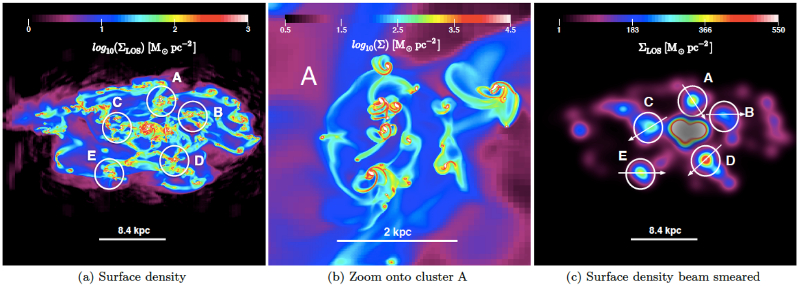| EPoS Contribution |
|
ISM dynamics and star formation in gas-rich galactic disks
Andreas Burkert U Munich, Munich, DE | |
| The interstellar medium of gas-rich galactic disks, especially at high, but also at low cosmic redshifts is dominated by a few very massive kpc sized gas clumps that dominate star formation and stellar feedback in these galaxies. In this contribution I demonstrate that these clumps are a natural outcome of gravitational disk instabilities, leading to smaller clumplets that lateron re-arrange themseves into large clump clusters. With the low resolution that is typical for observations of high-z galaxies, the theoretically predicted intricate substructure of these clump clusters cannot be resolved. I however will demonstrate that kinematical studies provide clear, indirect evidence for the observed unresolved clumps to consist of multiple substructures. I will discuss how star formation, stellar feedback and chemical enrichment proceeds in the complex, dynamical environment of a clump cluster with application to the origin of multi-component globular clusters, seed back holes and strong focussed gas outflows that feed the halos of galaxies and drive turbulence in the galactic disk. | |
 | |
| Caption: Left: ISM structure of a gas-rich, gravitationally unstable disk. Middle panel: Structure of clump clusters that formed in this disks. Right panel: Beam-smeared image for a galaxy located at redshift 2 where the clump clusters appear as large, homogeneous clouds. | |
| Collaborators: M. Behrendt, MPE, DE M. Schartmann, Swinburne U, AU R. Genzel, MPE, DE |
Key publication
Suggested Session: Molecular Clouds |

